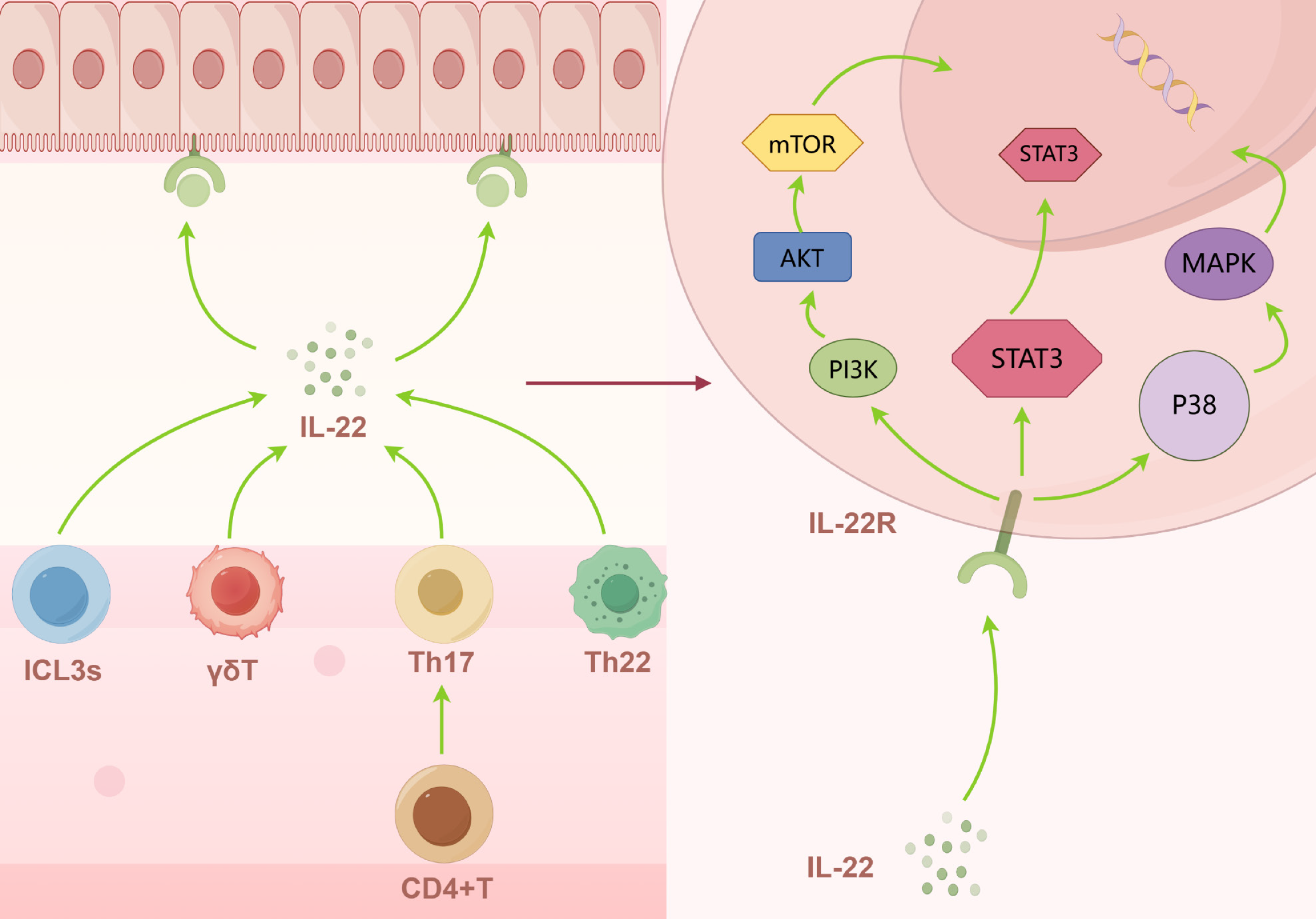Copyright
©The Author(s) 2025.
World J Gastrointest Oncol. Jun 15, 2025; 17(6): 107382
Published online Jun 15, 2025. doi: 10.4251/wjgo.v17.i6.107382
Published online Jun 15, 2025. doi: 10.4251/wjgo.v17.i6.107382
Figure 1 The workflow of single-cell RNA sequencing analysis for tumor samples.
First, tumor samples are obtained and processed into single-cell (SC) suspensions. Subsequently, RNA is extracted, followed by SC RNA sequencing (scRNA-seq) and the construction of a complementary DNA (cDNA) library. Based on the data from the library, on one hand, immune cells in tumor samples can be identified and classified; on the other hand, specific signaling pathways or transcription factors can be determined, facilitating in-depth exploration of tumor-related biological mechanisms.
Figure 2 Interaction relationships between various immune cells and tumor cells in the intestinal environment.
The immune cells involved in the figure include B cells, macrophages, immature dendritic cells (DCs), regulatory T cells (Tregs), cluster of differentiation 8-positive (CD8+) T cells, CD4+ T cells, myeloid-derived suppressor cells (MDSCs), neutrophils, natural killer (NK) cells, complementary innate lymphoid cells (ILCs), and B cells called regulatory B cells (Bregs). These immune cells interact with tumor cells in different ways and play their respective roles in processes such as tumor immune surveillance, immune escape, and immune regulation.
Figure 3 Interleukin 22 signaling pathways and immune cell interactions.
Interleukin 22 (IL-22) is secreted by various immune cells, including group 3 innate lymphoid cells (ICL3s), gamma delta (γδ) T cells, T helper 17 cells (Th17) cells, Th22 cells, and cluster of differentiation 4-positive (CD4+) T cells. Upon binding to its receptor, interleukin 22 receptor (IL-22R), IL-22 activates several intracellular signaling pathways. These pathways include the signal transducer and activator of transcription 3 (STAT3) pathway, which promotes immune responses and cell survival; the phosphatidylinositol 3-kinase (PI3K)/protein kinase B (AKT)/mammalian target of rapamycin pathway (mTOR), which regulates cell metabolism and growth; and the mitogen-activated protein kinase (MAPK) and p38 pathways, which are involved in cellular stress responses and inflammation regulation. IL-22 plays a crucial role in maintaining epithelial barrier integrity, stimulating the secretion of antimicrobial peptides and promoting tissue repair, especially in mucosal immunity and inflammatory responses.
- Citation: Zhang Z, Wang HM, Xu ZX, Luan WY, Lin SX, Miao YD. Application of single-cell sequencing in the study of immune cell infiltration in inflammatory bowel disease and colorectal cancer. World J Gastrointest Oncol 2025; 17(6): 107382
- URL: https://www.wjgnet.com/1948-5204/full/v17/i6/107382.htm
- DOI: https://dx.doi.org/10.4251/wjgo.v17.i6.107382











